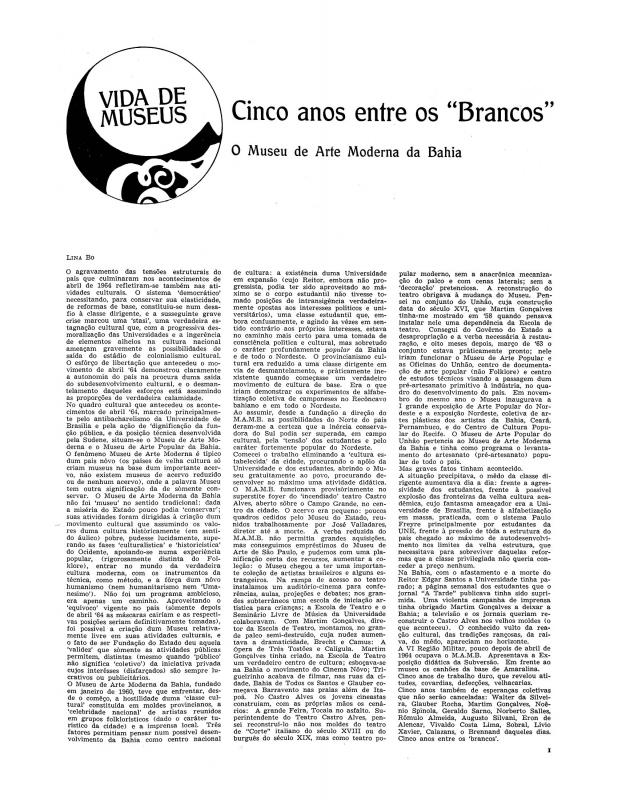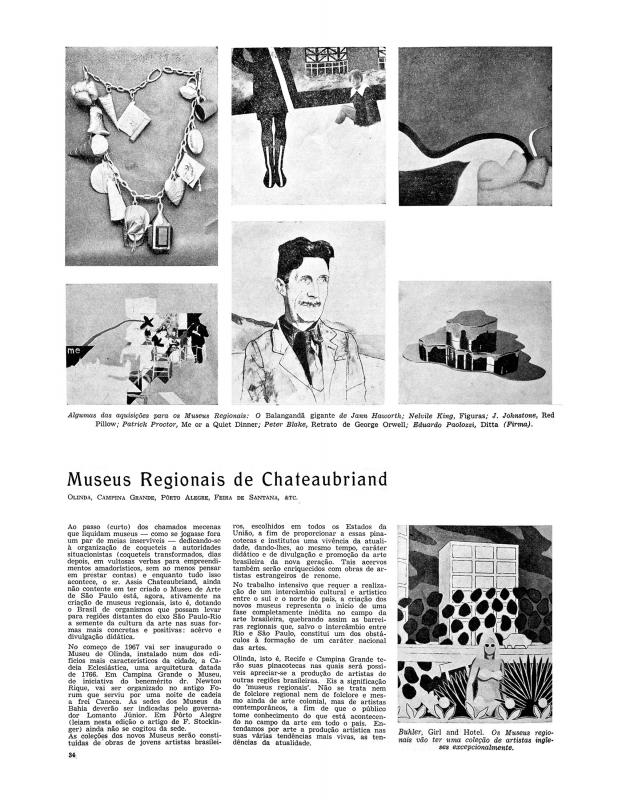This text considers the overall situation of the regional museums proposed and sponsored by businessman Assis Chateaubriand.
Owner of the largest mass media conglomerate in Brazil, Italian-Brazilian Assis Chateaubriand (1892–1968) was one of the most influential public figures in Brazil in the forties and fifties. He was an important journalist, businessman, and a major player in the arts and in politics. Chateaubriand envisioned a project to modernize the culture of the state of São Paulo, where he was based. As this article evidences, the next step in his project was to spread his ideas on art throughout the nation.
Assis Chateaubriand—along with Yolanda Penteado (1903–1983), coffee heir and wife of influential Italian-Brazilian industrialist Francisco (“Ciccillo”) Matarazzo—played an important role in establishing the Museu de Arte Moderna de São Paulo (MAM-SP). Starting in 1965, Chateaubrian and Penteado geared their efforts to opening regional art museums. The precedent for their work along these lines was the Museu de Arte Moderna da Bahia located in Salvador (capital of that state); the museum building was designed by architect Lina Bo [see the ICAA digital archives entitled “Bahia: Museu de Arte Moderna” (doc. no. 1111193) and “Cinco anos entre os ‘Brancos’” (doc. no. 1111192)]. As the director of the magazine HABITAT and the founder of the industrial design course given at the Instituto de Arte Contemporânea (IAC) housed at MASP, Lina Bo was also central to the infrastructure of the São Paulo museum.
For more general information on Chateaubriand’s initiative, see “Museus regionais de Chateaubriand” (doc. no. 1111179).
Despite the author’s abundant criticism of the project, the mistakes made by Chateaubriand, the engine behind it, are only insinuated. One such mistake was his reluctance to incorporate museums already in existence into the project. In all likelihood, Pietro Maria Bardi, director of the Museu de Arte de São Paulo (MASP) and sponsor of the magazine Mirante das Artes and of the gallery of the same name, was behind this criticism. There were political differences between Chateaubriand—creator of MASP—and Bardi. In closing, the text states with irony, that there cannot be the expectation of another figure of salvation like Chateaubriand to come along. It also supports a revamping of the project on the basis of professional work in conjunction with centers of higher education.



